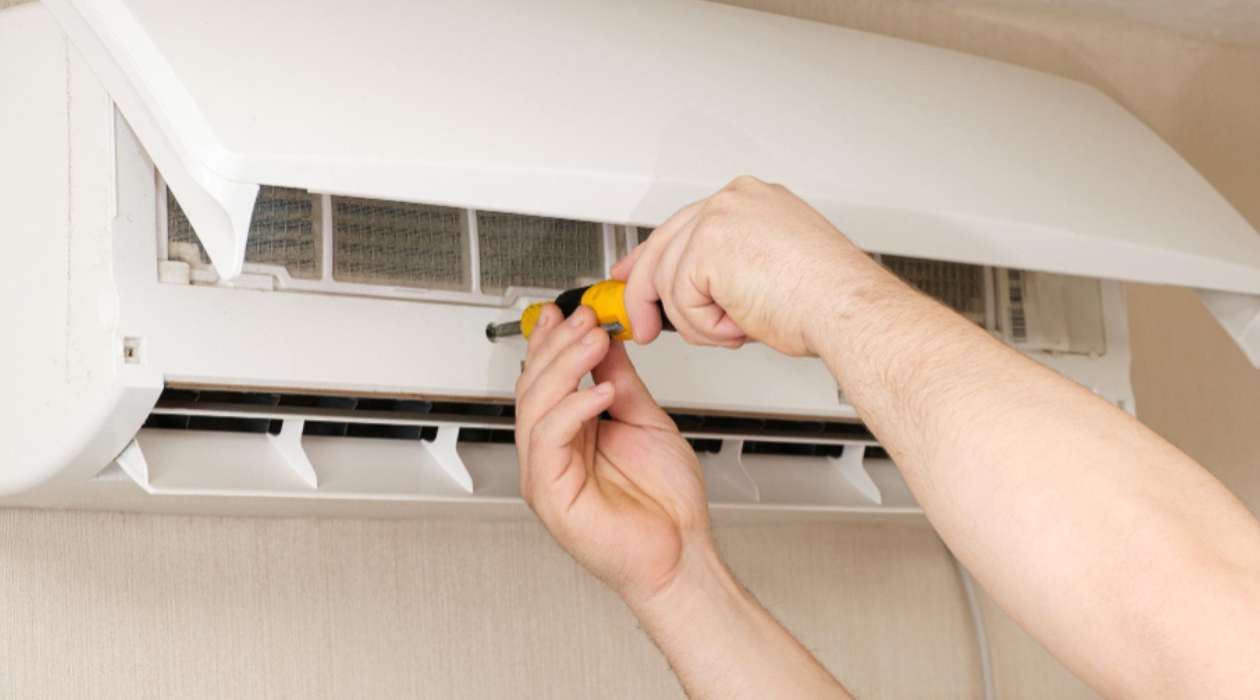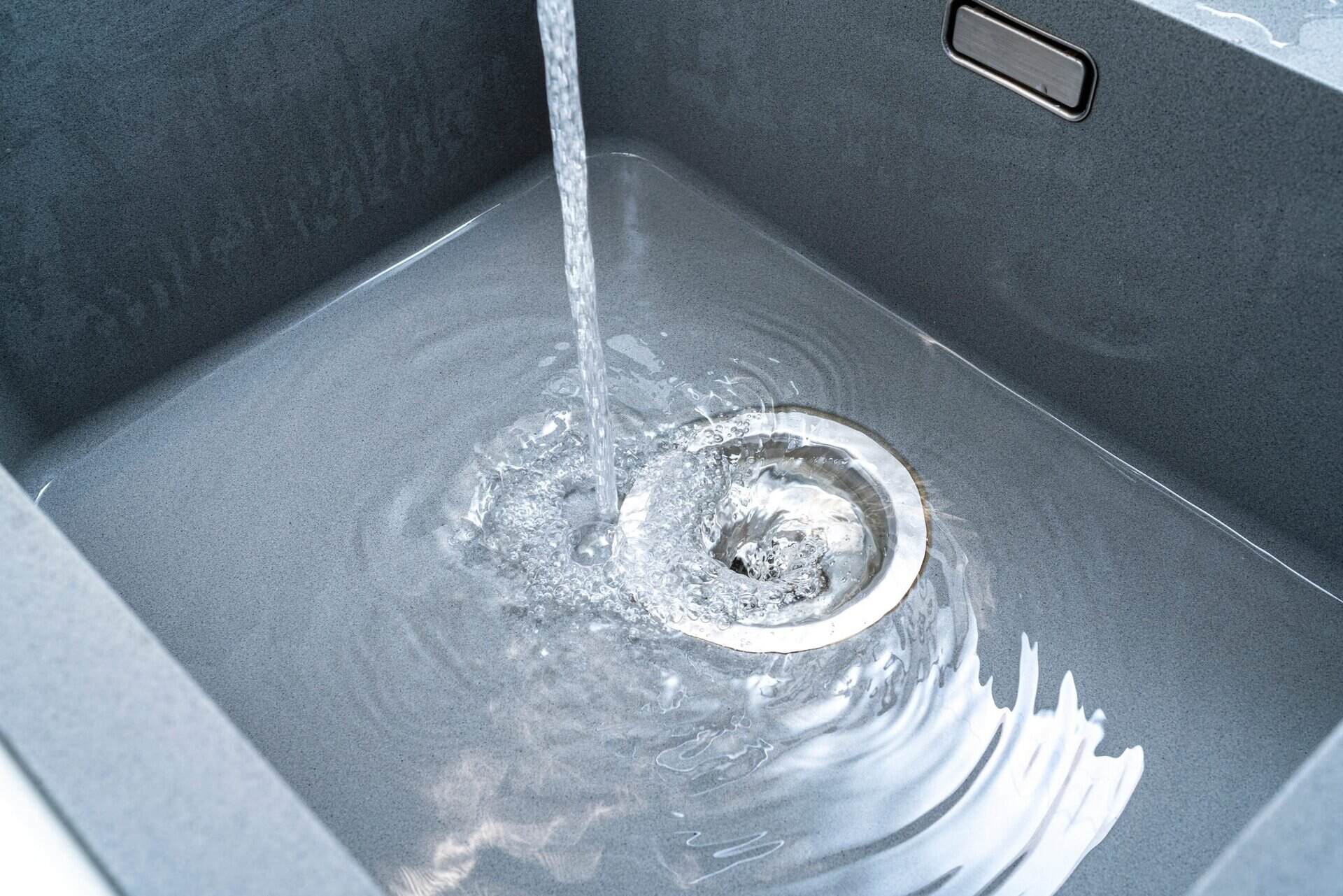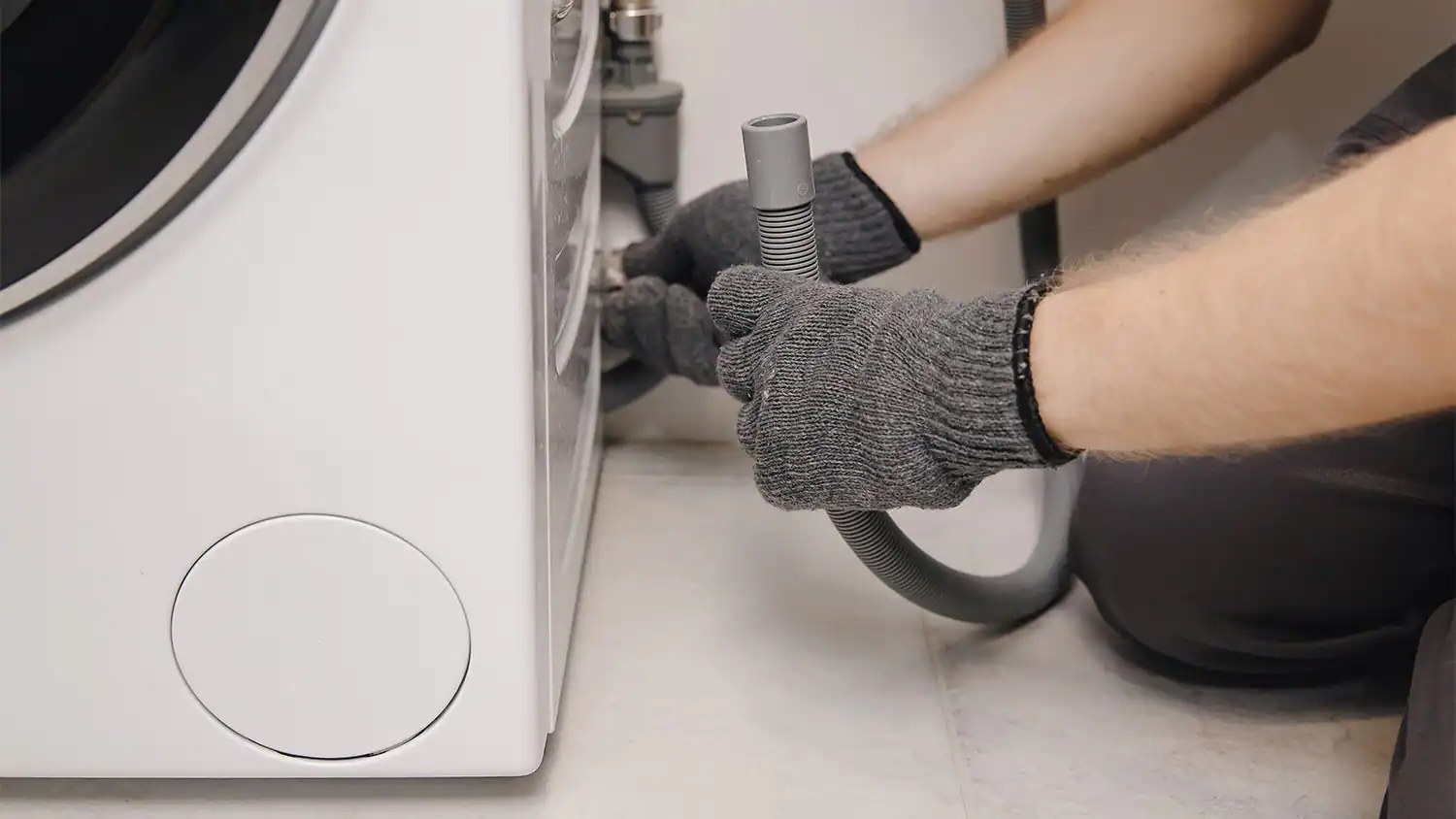Home>Home Maintenance>Why Is Drain Pan Maintenance Important In The Ventilation System?


Home Maintenance
Why Is Drain Pan Maintenance Important In The Ventilation System?
Modified: March 6, 2024
Proper drain pan maintenance is crucial for a well-functioning ventilation system. Learn why it is essential for your home's maintenance and indoor air quality.
(Many of the links in this article redirect to a specific reviewed product. Your purchase of these products through affiliate links helps to generate commission for Storables.com, at no extra cost. Learn more)
Introduction
Welcome to the world of home maintenance, where taking care of every nook and cranny of your house can make a significant difference in its overall functionality and longevity. One area that often goes unnoticed but plays a crucial role in the efficient operation of your home’s ventilation system is the drain pan. Although it may seem like a small and insignificant component, neglecting its maintenance can lead to a host of issues that can impact not only the ventilation system but also your entire living space.
But what exactly is a drain pan? Why is it so important to keep it well-maintained? In this article, we will explore the answers to these questions and delve into the consequences of neglecting drain pan maintenance in your home’s ventilation system.
Key Takeaways:
- Regular drain pan maintenance is crucial to prevent water damage, mold growth, and system malfunctions in your home’s ventilation system. Neglecting maintenance can lead to costly repairs and health hazards.
- By keeping the drain pan clean and clear of debris, you can ensure efficient airflow, prevent water damage, and maintain a healthy living environment. Regular maintenance saves money and promotes system longevity.
Read more: Why Is HVAC Maintenance Important
What is a Drain Pan?
A drain pan is a shallow, typically metal or plastic, pan that is installed beneath certain appliances or equipment to collect and drain away any excess water or condensation that may be produced during their operation. In the context of a ventilation system, a drain pan is typically found beneath the air conditioning unit or the air handler. Its primary function is to collect the condensation that forms on the cooling coils and channel it to a drainage system or a condensate pump.
The drain pan serves as a crucial component in the overall functionality of the ventilation system, as it prevents water from accumulating and causing damage to the equipment and surrounding areas. Additionally, it plays a vital role in maintaining proper airflow and preventing the growth of mold and bacteria, which can have adverse effects on indoor air quality and the health of occupants.
Drain pans are available in different shapes and sizes, depending on the specific requirements of the equipment they are installed under. They can be rectangular or oval-shaped and are typically located beneath the evaporator coils, where condensation occurs. Some drain pans come with a built-in drain pipe or a fitting to connect to the drainage system, while others require the installation of a separate drain line.
In summary, a drain pan is a crucial component of a ventilation system, responsible for collecting and channeling condensation away from the equipment. Its proper maintenance is vital to ensure the efficient operation of the system and prevent potential water damage and other issues.
Importance of Drain Pan Maintenance in Ventilation Systems
Maintaining the drain pan in your home’s ventilation system is of utmost importance for several reasons. Let’s explore some key reasons why drain pan maintenance should be a top priority:
1. Preventing Water Damage:
One of the primary reasons to keep your drain pan well-maintained is to prevent water damage. If the drain pan becomes clogged or damaged, it can lead to water overflow and leakage. This can result in damage to the surrounding areas, such as ceilings, walls, and flooring. Excessive moisture can also promote the growth of mold and mildew, leading to further damage and potential health hazards.
2. Ensuring Proper Airflow:
A properly functioning drain pan allows for the efficient removal of condensation from the ventilation system. If the drain pan is clogged or obstructed, it can impede the flow of water, causing it to back up and potentially damage the equipment. This can lead to restricted airflow, reduced cooling efficiency, and an overall decrease in the system’s performance. Regular maintenance of the drain pan ensures proper drainage and optimal airflow within the ventilation system.
Read more: Why HVAC Is Important
3. Managing Mold and Bacterial Growth:
Stagnant water accumulated in a poorly maintained drain pan becomes a breeding ground for mold, mildew, and bacteria. These microorganisms can contaminate the air passing through the ventilation system and contribute to poor indoor air quality. Regular maintenance, including cleaning and disinfecting the drain pan, helps prevent the growth and spread of mold and bacteria, promoting a healthier living environment.
4. Enhancing System Efficiency:
A well-maintained drain pan ensures the proper functioning of the ventilation system as a whole. When the drain pan is clean and free from debris, water can flow freely, allowing the system to operate at peak efficiency. This helps to optimize energy consumption and minimize operating costs.
By prioritizing drain pan maintenance, you can avoid costly repairs and potential health risks associated with water damage, mold growth, and compromised ventilation system efficiency.
Preventing Water Damage
One of the key reasons why drain pan maintenance is crucial in a ventilation system is its role in preventing water damage. When the drain pan is not properly maintained, it can lead to water overflow and leakage, causing damage to the surrounding areas and the ventilation system itself.
1. Clearing Debris:
Debris such as dirt, dust, and leaves can accumulate in the drain pan over time, obstructing the flow of water. Regularly checking and clearing the drain pan of any debris is essential to ensure proper drainage. Use a soft brush or a cloth to gently remove any debris from the pan.
Read more: Why Plumbing Is Important
2. Unclogging Drain Lines:
Drain lines connected to the drain pan can become clogged due to accumulated dirt, algae, or mineral deposits. A clogged drain line disrupts the proper flow of condensation, leading to water backup and potential overflow. Periodically check the drain lines for any blockage and clear them using a stiff brush or a diluted solution of vinegar and water to dissolve any buildup.
3. Checking for Leaks:
Inspect the drain pan for any signs of leakage. Cracks or damage to the drain pan can cause water to escape, leading to water damage in the surrounding areas. If you notice any leaks, promptly replace or repair the drain pan to prevent further damage and ensure proper function.
4. Installing Overflow Protection:
In addition to regular maintenance, consider installing an overflow protection device for added security. These devices are designed to shut off the HVAC system if the water level in the drain pan exceeds a certain threshold, preventing water overflow and subsequent damage.
By diligently maintaining the drain pan in your ventilation system, you can effectively prevent water damage, safeguarding your home and preventing costly repairs in the long run.
Ensuring Proper Airflow
Another important aspect of drain pan maintenance in a ventilation system is ensuring proper airflow. A well-maintained drain pan allows for efficient removal of condensation, preventing water buildup and obstruction of airflow within the system.
Read more: How To Install A Washer Drain Pan
1. Regular Cleaning:
Dust, dirt, and other particles can accumulate on the surface of the drain pan over time, obstructing the flow of water. Regularly cleaning the drain pan is essential to ensure unobstructed airflow. Use a mild detergent or a mixture of vinegar and water to clean the drain pan, making sure to rinse thoroughly afterward.
2. Clearing Blockages:
In some cases, blockages may occur in the drain line connected to the drain pan. These blockages can restrict airflow and impede the proper functioning of the ventilation system. Regularly inspect the drain line for any blockages and clear them using a stiff brush or a specially designed drain cleaning tool.
3. Verifying Drain Pipe Size:
Ensure that the drain line connected to the drain pan is appropriately sized to handle the condensation produced by the ventilation system. If the drain pipe is too small, it can lead to water backup and restricted airflow. Consult with a professional if you suspect that the drain pipe size may be inadequate.
4. Checking Air Filters:
Clogged or dirty air filters can disrupt airflow within the ventilation system. When airflow is restricted, it can cause additional strain on the system, ultimately leading to decreased performance and efficiency. Regularly inspect and replace air filters as needed to maintain optimal airflow and prevent any negative impact on the drain pan.
By ensuring proper airflow in your ventilation system through regular drain pan maintenance and other measures, you can optimize the efficiency and performance of the system, providing a comfortable and healthy living environment.
Read more: Why Are Gutters Important
Managing Mold and Bacterial Growth
Proper maintenance of the drain pan in a ventilation system is crucial for managing mold and bacterial growth. Stagnant water in a poorly maintained drain pan can become a breeding ground for these microorganisms, which not only affect the efficiency of the system but also contribute to poor indoor air quality and potential health hazards.
1. Regular Cleaning and Disinfection:
Regularly cleaning and disinfecting the drain pan helps prevent the growth and spread of mold and bacteria. Use a mild detergent or a solution of equal parts water and vinegar to clean the drain pan, removing any accumulated debris and organic matter. After cleaning, consider disinfecting the drain pan with a disinfectant spray or a bleach solution (following manufacturer instructions).
2. Inspecting for Mold and Mildew:
Periodically inspect the drain pan and surrounding areas for any signs of mold or mildew growth. These can appear as dark spots, discoloration, or a musty odor. If mold or mildew is present, take immediate action to clean and disinfect the affected areas, eliminating the source of moisture to prevent further growth.
3. Improving Ventilation:
Poor ventilation can contribute to increased humidity levels in the ventilation system, creating an ideal environment for mold and bacterial growth. Ensure proper ventilation throughout your home, including the ventilation system itself. This helps to promote airflow and prevent the buildup of excess moisture.
Read also: 13 Amazing Dishwasher Drain Pan for 2024
4. Controlling Humidity:
Maintaining appropriate humidity levels within your home can also help manage mold and bacterial growth. Use dehumidifiers in areas prone to high humidity and consider installing a whole-house dehumidification system if necessary. Keep in mind that the ideal humidity level for indoor spaces is generally between 30% and 50%.
By actively managing mold and bacterial growth through regular drain pan maintenance, cleaning, and proper ventilation, you can ensure a healthier living environment and improve the overall air quality in your home.
Enhancing System Efficiency
Maintaining the drain pan in your ventilation system not only prevents water damage and manages mold growth but also enhances the overall efficiency of the system. An efficiently operating ventilation system not only improves the comfort of your home but also helps reduce energy consumption and lowers utility costs. Here’s how drain pan maintenance plays a role in enhancing system efficiency:
1. Unobstructed Airflow:
A clean and well-maintained drain pan ensures unobstructed airflow within the ventilation system. By preventing blockages and water backup, proper drain pan maintenance allows the system to operate smoothly, maximizing the amount of conditioned air that can flow through the vents. This helps in maintaining consistent temperatures throughout your home and minimizing strain on the system.
2. Smoother Heat Exchange:
In cooling systems, the drain pan is located beneath the evaporator coils. If the drain pan is clogged or obstructed, it can hinder the proper heat exchange process. A clean drain pan allows for efficient removal of condensation from the coils, promoting optimal heat exchange and ensuring that your cooling system operates at peak performance.
Read more: Where Is AC Drain Pan
3. Reduced Energy Consumption:
An efficiently operating ventilation system consumes less energy, which translates to lower utility bills. When the system is not working properly, such as due to a clogged drain pan, it has to work harder to overcome the decreased airflow and inadequate heat exchange. By maintaining the drain pan, you can help the system operate efficiently and reduce energy consumption.
4. Prolonged Equipment Lifespan:
A ventilation system that operates efficiently and is well-maintained will experience less wear and tear on its components. By regularly inspecting and cleaning the drain pan, you can prevent water damage, mold growth, and other issues that can lead to premature equipment failure. This helps extend the lifespan of the system, saving you money on costly repairs or replacements.
Overall, by prioritizing drain pan maintenance, you can enhance the efficiency of your ventilation system, improve energy efficiency, and prolong the lifespan of your equipment.
Consequences of Neglecting Drain Pan Maintenance
Neglecting the maintenance of the drain pan in your ventilation system can lead to a range of consequences that can impact both the system itself and your living space. Here are some of the potential consequences of neglecting drain pan maintenance:
1. Water Damage:
Without proper maintenance, the drain pan can become clogged or damaged, leading to water overflow and leakage. This can result in water damage to the surrounding areas, such as ceilings, walls, and flooring. Water damage can be costly to repair and may require extensive restoration work.
Read more: Why Are Pillows Important
2. Mold and Mildew Growth:
A neglected drain pan creates an environment conducive to the growth of mold and mildew. Stagnant water and high humidity levels provide the perfect conditions for these microorganisms to thrive. Mold and mildew can spread throughout your home, affecting indoor air quality and potentially triggering allergies or respiratory issues.
3. Odor and Poor Indoor Air Quality:
If mold and bacteria are allowed to grow in the drain pan, they can release unpleasant odors that spread throughout your home. Additionally, the presence of these contaminants can contribute to poor indoor air quality, leading to discomfort and potential health issues for you and your family.
4. System Malfunction or Failure:
A neglected drain pan can cause problems within the ventilation system itself. Water backup and blockages can lead to restricted airflow, decreased cooling efficiency, and ultimately system malfunction or failure. This can result in costly repairs or the need for a full system replacement.
5. Increased Energy Consumption:
When the ventilation system is not operating efficiently due to a neglected drain pan, it has to work harder to overcome the decreased airflow and compromised heat exchange. This leads to increased energy consumption and higher utility bills.
Overall, neglecting drain pan maintenance can have serious consequences, from water damage and mold growth to system malfunction and decreased indoor air quality. By prioritizing regular maintenance, you can avoid these issues and ensure the optimal performance and longevity of your ventilation system.
Read more: Why Insulation Is Important
Steps for Drain Pan Maintenance
Proper maintenance of the drain pan in your ventilation system is essential to prevent water damage, mold growth, and system malfunctions. Here are some steps you can follow to effectively maintain your drain pan:
1. Regular Inspection:
Periodically inspect the drain pan to check for any signs of damage, such as cracks or corrosion. Look for standing water or moisture around the pan, as this could indicate a clog or other issues. Catching potential problems early allows for prompt repairs or replacements.
2. Cleaning the Drain Pan:
Remove any debris or dirt from the drain pan using a soft brush or cloth. Be gentle to avoid causing damage to the pan. If there is significant buildup, you can also use a mild detergent or a mixture of vinegar and water to help loosen and remove the debris. Rinse the drain pan thoroughly after cleaning.
3. Clearing the Drain Line:
Check the drain line connected to the drain pan for any blockages. If necessary, use a stiff brush or a specially designed drain cleaning tool to clear the line. You can also flush the drain line with a mixture of equal parts water and vinegar to remove any buildup or algae growth.
Read more: Why Is Woodworking Important
4. Disinfecting the Drain Pan:
After cleaning, consider disinfecting the drain pan to eliminate any remaining bacteria or mold spores. You can use a disinfectant spray or create a solution of bleach and water (following manufacturer instructions) to thoroughly disinfect the drain pan. Rinse the pan well after disinfection.
5. Checking Drain Line Connections:
Inspect the connections of the drain line to ensure they are secure and leak-free. If you notice any leaks, promptly repair or replace the connections to prevent water damage.
6. Maintaining Proper Ventilation:
In addition to drain pan maintenance, ensure proper ventilation throughout your home. Adequate airflow helps prevent excess humidity and moisture buildup, reducing the strain on the ventilation system and minimizing the risk of drain pan issues.
Remember to consult the manufacturer’s guidelines for specific maintenance instructions tailored to your ventilation system. If you are unsure or uncomfortable performing maintenance yourself, it is always best to seek professional assistance.
By following these steps and regularly maintaining your drain pan, you can ensure efficient operation of your ventilation system, prevent water damage, and promote a clean and healthy indoor environment.
Conclusion
Maintaining the drain pan in your home’s ventilation system is vital for ensuring its proper functioning and preventing various issues that can impact both the system itself and your living space. Neglecting drain pan maintenance can lead to water damage, mold growth, decreased system efficiency, and poor indoor air quality. However, by following simple steps and incorporating regular maintenance into your home care routine, you can avoid these consequences and enjoy the benefits of a well-maintained drainage system.
Regularly inspecting and cleaning the drain pan helps prevent water overflow, clogging, and damage. Clearing debris, unclogging drain lines, and checking for leaks are essential maintenance tasks to keep the drain pan and the overall ventilation system in good condition. Additionally, managing mold and bacterial growth through regular cleaning and disinfection ensures a healthier living environment.
By maintaining a well-functioning drain pan, you can enhance the overall efficiency of your ventilation system. Unobstructed airflow, effective heat exchange, reduced energy consumption, and a prolonged equipment lifespan are some of the benefits of prioritizing drain pan maintenance.
Remember, neglecting drain pan maintenance can have serious consequences, including water damage, mold growth, and system malfunctions. By incorporating regular maintenance and adopting good practices, you can prevent these issues, save on costly repairs, and promote a comfortable and healthy living environment for you and your family.
Take the time to care for your drain pan and incorporate it into your home maintenance routine. Your ventilation system will thank you with improved performance, increased efficiency, and a longer lifespan.
Frequently Asked Questions about Why Is Drain Pan Maintenance Important In The Ventilation System?
Was this page helpful?
At Storables.com, we guarantee accurate and reliable information. Our content, validated by Expert Board Contributors, is crafted following stringent Editorial Policies. We're committed to providing you with well-researched, expert-backed insights for all your informational needs.







0 thoughts on “Why Is Drain Pan Maintenance Important In The Ventilation System?”